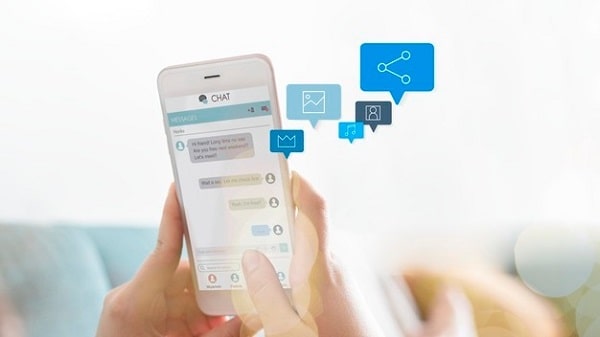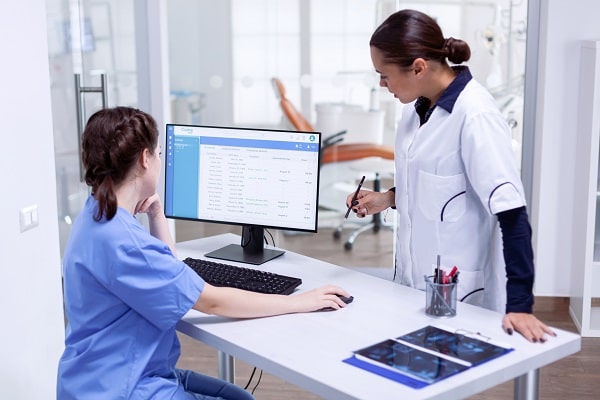Reasons why you need to automate your patient communication
Medical science is an industry that is tackling new challenges and winning over them each day. With the emergence of medical practices that are equipped with the latest edge equipment and experienced physicians, nurses, and medical staff, the quality of medical treatment for the patients has massively improved.
However, with the rise of patient care units and practices, patient care is available just a step away. This is why a competitive atmosphere surrounds the industry. From the way patient appointments are scheduled to how the patients' follow-up is done, everything makes up the patient experience, thereby influencing overall patient satisfaction. Patient communication also greatly contributes to patient satisfaction.

What is patient communication in healthcare?
Patient communication in healthcare is the interaction that the practices and their staff and representatives make with the patients. Communication now happens through numerous different channels, and all of them largely contribute to making up patient communication.
Doctor-patient communication certainly plays an important part in the patients' journeys simply because it is doctors' consultation that the patients require in most instances. However, all of the other individuals, including the nurses and other healthcare staff, also communicate directly or indirectly with the patients, and most importantly, they also leave quite a big impact on the patients.
While communication errors in other industries would mean small mistakes and serious blunders that would mean loss of money and time, for the medical industry, it is more serious and means much more.
Along with causing worries for the patients that might have them end up switching providers, poor patient communication in healthcare often leads to misdiagnoses, which might also give rise to health complications and also lead to fatality.
Common effects of poor patient communication
As per recent survey reports, there were several instances of patient communication failures, which can be billed easily around $1.7 billion in malpractice costs. Besides, miscommunication was solely responsible for around 2,000 preventable deaths.
One of the recent reports by the Joint Commission traced 80% of the serious medical errors to the miscommunication that occurred between caregivers during patient handovers.
Communication between healthcare professionals is important because that will contribute to the ultimate diagnosis, and the treatment would result. Such communications are crucial because they are technical and mostly convey the patient's conditions, thereby declaring the next step ahead in the patient's treatment. On the other hand, the communication between doctor and patient helps the latter understand the condition that he/she is in, and make up the mind for the next step ahead. These communications also help the doctors grasp things that are going on in the patient's mind, which directly/indirectly affects the treatment and recovery.
Poor patient communications have a wide range of effects, some of which are :
• Dissatisfaction among the patients
• Mistreatment
• Loss of time
• Loss of money
• Loss of credibility
• Loss of jobs
• Discontinuity of care
• Death
• Legal actions
• Poor quality of care
All of these are reasons enough why you need to enhance patient communications back at your practice.
It's never too late to boost communication at your medical practice because of the numerous benefits it provides, ensuring envious growth. Automating your communication might just be the first step towards making the most of your patient communication. If you are wondering why you should explore more about automated patient communications, and look to automate patient communication in healthcare, then the section that follows covers you.
9 ways automated patient communications benefit medical practices
Automation is being increasingly successful in most of today's industries that it has been introduced to, and the medical sector is not unknown to automation too. In fact, automated communications can greatly benefit patient communications, making them smart, time-saving, and efficient.
Some of the major benefits that automated patient communications provide are :
They offer smart automated reminders
Patients often tend to forget their physician appointments, medical tests, and more. This is why it is essential to offer them adequate reminders so that they turn up at their appointments, thereby preventing no-shows.
Reminders are of many types today, digital reminders being the latest of them all. As per recent surveys, more than 50% of patients from all age groups seem to prefer reminders through digital devices and methods over phone reminders.
Another survey mentioned that around 70% of patients are of the opinion that they are more likely to choose a medical provider that offers reminders for follow-up care via email. With all of these statistics, medical practice simply cannot help but put forward sufficient patient reminders. However, extending all these reminders is nothing but plain hassles if they are done by individuals, all of which can be prevented by using automated patient reminders from reputed providers like GrowPractice.
They help provide one-way updates and information
Updates and information extended to the patients plays an important part in patient communications and can be considered one of the main pillars of patient-centered communication.
Whether it is any details about safety measures, availability of tests and doctors, information on vaccines, and telemedicine, digitally extending all of these updates to the patients is really convenient and effective.
All of these one-way communications to the patients can even be faster and hassle-free with the gift of automation. Automated one-way patient-provider communication can save more time for the practices and ramp up the practice's credibility.
Automated communications help make online patient registrations successful
Booking patient appointments has always been one major hassle for medical providers. The appointment scheduling along with the patient registration and intake process make up the initial booking part of the patients. They are not only notoriously time-taking but are also not much streamlined when it comes to most practices.
Automation can help make online patient appointment scheduling, patient registration, and intake fast and smooth. GrowPractice is one of the leading providers of automated patient scheduling software, which are notable for the easy online patient appointment booking, intake, and registrations. With the paperless online intake forms, patients can now complete their appointment booking and registration processes online anytime and from anywhere they want.
Automation greatly mitigates waiting room woes
Patient in wait is not a new sight. The waiting time of patients has always been lengthy, which has improved to a great extent with time.
Over 84% of the patients surveyed regard wait time to be very important for their overall satisfaction. Also, statistics say that 1 in 5 patients has changed their doctors because of the long wait times. Automation has largely been mitigating the wai time woes for the patients with a systematic approach towards wait times and ensuring that they wait virtually, at their own preferred place than waiting physically at the clinics.
Patients can now wait outside wherever they wish just after confirming their presence digitally, with online check-ins. On the arrival of their turns, the patients will be duly notified and directed to the treatment rooms. This whole thing can now be automatized, thereby cutting short the time and resources needed for materializing the same.
They help reduce no-shows to a good extent
With the emergence of automated digital software and systems for medical practices, the patient no-shows have drastically reduced. GrowPractice, a leading medical office software provider, offers online patient and practice management software systems that are available 24x7 to book appointments for patients and make sure that they are registered online from anywhere they like. Besides, GrowPractice also extends automated reminder facilities, which helps in keeping patients aware of their upcoming appointments. All of these features have come together to make possible a whopping 89% reduction in patient no-shows.
They help streamline the billing process
The billing process of medical practices has always been surrounded by assumptions and uncertainties. Around 41% of the patients still think that the billed amount is incorrect. Furthermore, the billing desks for many practices aren't equipped with the latest software and technology, thereby making the billing process slower and inefficient. Here's where automation is largely proving to be a resource. The automated billing process, fuelled by cutting-edge billing software from GrowPractice is enabling numerous practices to go above and beyond their services, thereby massively boosting patient satisfaction.
They help in preserving accurate data
The patient data or PHI collected from the patients are really significant for the practices as well. This data is for future reference and is also passed further up the order to ensure that the patients are treated properly.
Here, the patient information needs to be added accurately and in a detailed way, which should also be maintained for future requirements. Automating the process of capturing patient information during the check-in and intake process is a major boon here for the medical industry today. Medical practices now can simply implement hassle-free patient and practice management software solutions from providers like GrowPractice to automatically capture the patients' information and save them securely with them.
GrowPractice also provides multi-layered secured and promising data encryption methods to secure patient health information and other Protected Health Information (PHI) all the time, minus the hassles.
Automation handles rush efficiently
The rush at hospitals and clinics is known to all, but this rush can now be avoided with the efficient automation technologies. Automated software and tools need fewer resources and are capable of tackling more problems like situations when there is an overflow of patients. This software would generate feedback at their normal rate and would encourage the processes to take place in order.
Along with the above-mentioned benefits of automation, this amazing technology is noted for many other advantages that it provides when compared to the traditional processes that are still in use. It's high time that you too look for automating the basic processes/tasks at your medical practice. This will magnify efficiency, save time and money, and would also boost patient satisfaction.
Join us to automate your systems and services now!
GrowPractice offers game-changing medical office, patient, and practice management software, and systems that are revolutionizing the way patients are booked, engaged, and treated for their illnesses, leaving them satisfied. It allows auto-filling, rescheduling, and cancellation of patient appointments, two-way texting facilities, integration with EHR/PM software customized patient workflow, and much more. Reach out to us now!



